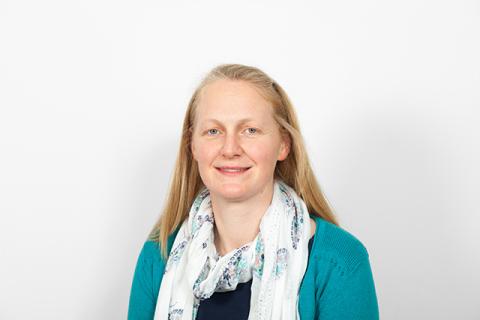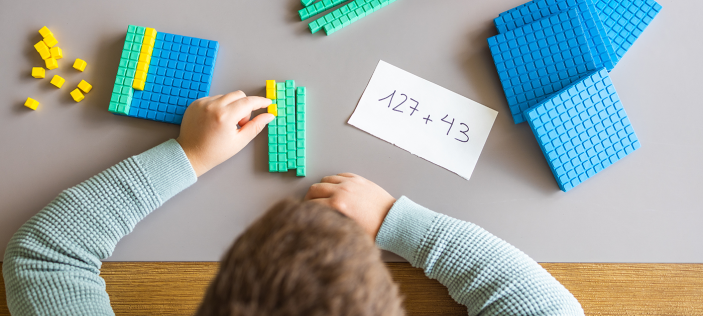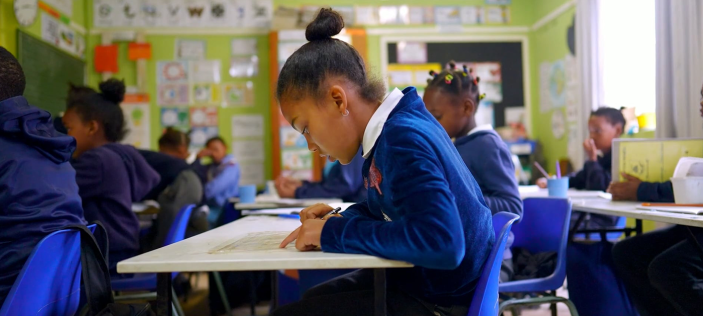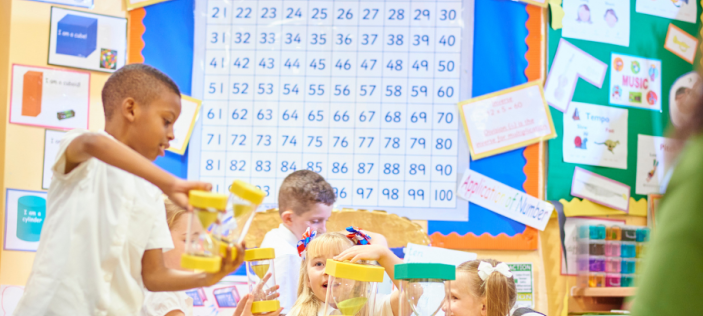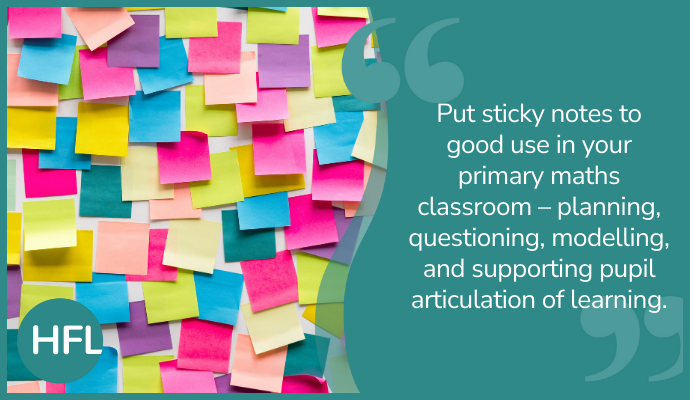
As a member of the HFL primary maths team, I spend most of my days in schools, thinking about and developing teaching and learning. Particularly through supporting subject leaders with their monitoring, and teachers with their planning and delivery of lessons, I am lucky enough to get to see and talk about a lot of maths teaching and learning across many different schools. It is through this experience and through reflection with the wider primary maths team, that common themes start to emerge, and the team can start to consider how to best support schools in their endeavours.
So, what are we noticing in classrooms? Where might we be able to make small changes to practice that can make a difference? Our collective contemplation brought us this time to…
… sticky notes. Yes, you heard me correctly. Sticky notes – the next silver bullet? Of course not… but stick with me (no pun intended). Here is my thinking…
How do you plan your maths lessons?
There are two areas that I am regularly noticing in schools where computer-based slides are causing problems. The first of these occurs at the point of planning.
Planning expectations can be very different across schools and the maths team have long been advocates for ensuring that the precious time that teachers have for planning is well spent - ensuring that lessons are well structured and focused on building success for all their pupils.
In some schools, planning has become only about preparing presentations to support teachers with their lesson delivery and whilst this may not cause a problem, there are dangers. This is probably most dangerous where schools are “sharing planning” rather than undertaking “shared planning”. What I mean by that is where one person in a school is doing the thinking about planning and providing slides to their colleagues.
Now, I am all for teachers supporting each other and have never been one to “re-invent the wheel”, but one of the keys to successful teaching is thinking about the learning.
It is through this thinking that teachers consider their implementation, the possible misconceptions, the key questions, the points at which particular focus might be needed.
It is through this thinking that teachers consider the needs of their pupils and what they might do differently to respond to these. If teachers have not thought ahead about their lessons, it is less likely that their teaching will meet pupil needs.
It is clear in my mind that all teachers need to be drawn back to looking at the focus of teaching so that any provided resources and slides can be set in context – so that there is focus on learning rather than presentation of a slide deck and activities without real thought about the learning they are driving at.
This is where the simple sticky note can come in.
Why use sticky notes for planning?
At the point of planning, sticky notes can be used to draw attention to key aspects of the planning such as key vocabulary, a hinge question and any likely misconceptions that will need to be exposed and addressed.
The simple act of reviewing the teaching and identifying these key focus areas leads to teachers being clearer about the lesson focus. I have to admit that I often do this when planning and then take a sticky note with me while I am teaching, just to keep me on track. I find that the act of distilling the teaching into its key elements makes me much more precise in my modelling and expectations of pupils’ responses.
Some examples:
This Year 5 teacher has used a sticky note to prepare key questions and activities for comparing fractions.
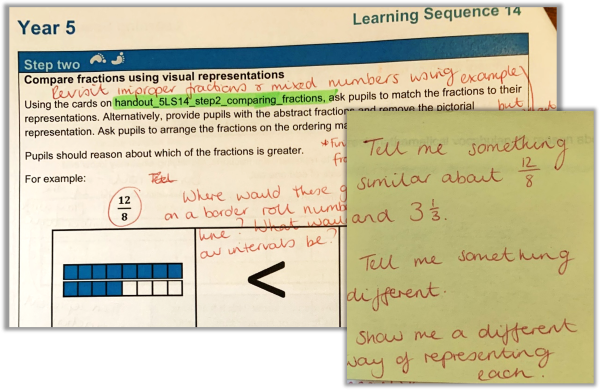
This Year 2 teacher has used a sticky note to identify resources and manipulatives required for the lesson. Handy for getting prepared beforehand.
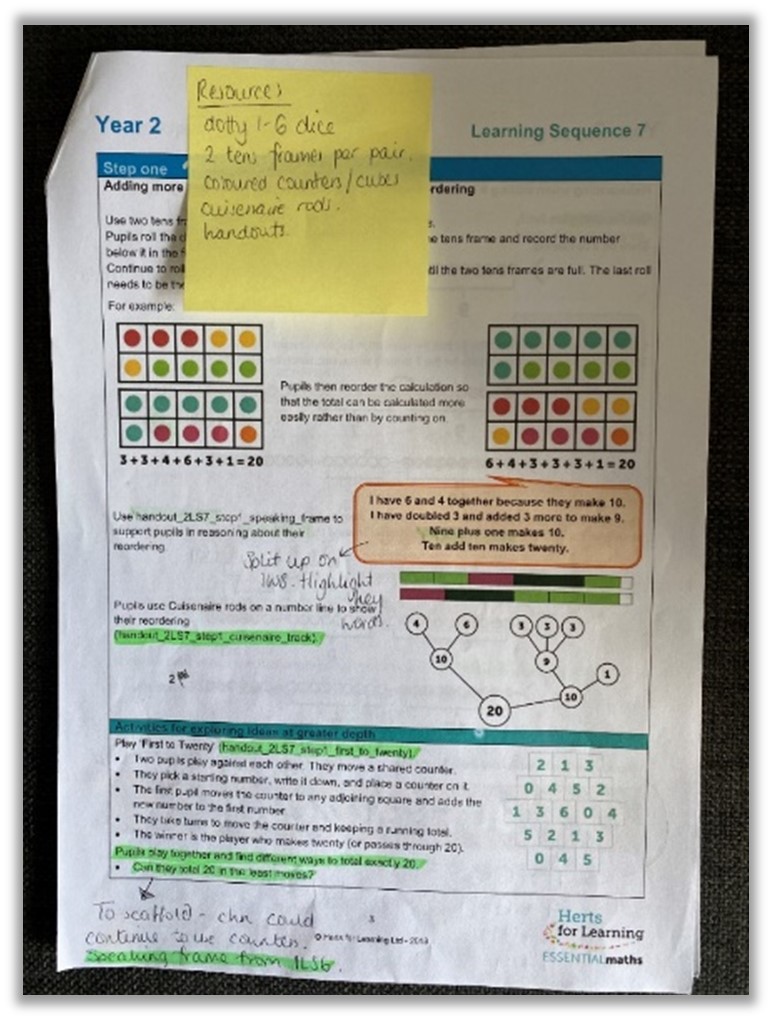
Digital sticky notes are also an option. This teacher has used them to identify concrete resources (manipulatives) to prepare and model with, scaffolds for pupils to use and a guided group teaching plan.
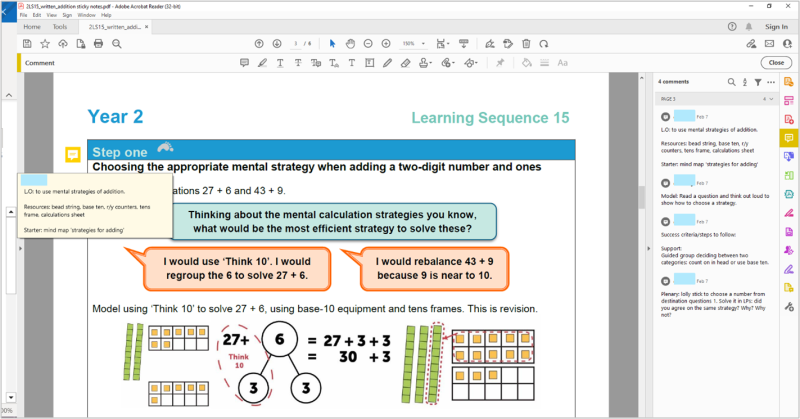
Are your pupils making connections between models and abstract recording? How do you model that recording?
The second area where computer slides can be problematic, and could be swapped for sticky notes, is at the point of teaching.
Firstly, I often now see teachers using slides which show representations on them and talking with confidence about what children can see on these slides. The problem is that what is clear to the teacher, is not always clear to the novice learner.
Particularly when a process is modelled, it is crucial that teachers draw attention to what is happening and explicitly make links between any models and their abstract equivalent.
In my experience, this is best done through:
- using the models together alongside each other and through adding new information to the model or showing where the values come from while stepping through the process.
Or…
- starting with a worked example and then unpicking and modelling the steps that led to its development.
Pre-prepared slides can present problems here, especially if there is not enough room to complete the abstract model alongside a visual representation; if the slide is unable to retain modelling while the next step in the process is animated and if the quality of the interactive writing tool makes it hard to annotate the model.
Why use sticky notes for modelling and making connections?
I am a huge fan of a visualiser to support with live modelling and connection building and the fact that a sticky note can be placed anywhere, removed, and moved around enables me to make repeated use of it to check that pupils are building understanding of what I am teaching.
For example, when modelling “think 10” as shown below, I find it really helpful to place the sticky note right next to the tens frame as we step through the process of regrouping the 9 into 3 and 6 more as shown below. I can then reuse this sticky note at different points in the teaching sequence, with different pupils around the classroom. For example, I can start from the sticky note and ask the child to build the calculation and move the counters to show what the model is representing, I can leave the concrete model and ask children to complete their own recording of the calculation and check it against the sticky note.
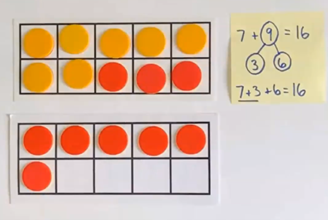
Removal of the sticky note also allows me to use the same calculation and to consider how this could be done differently, by regrouping the 7 into 1 and 6 in order to make 10 and 6 more. And showing the sticky notes together enables discussion around calculation efficiency and choice making.
It may seem like a small change to practice, but being able to move the modelling, completed within a teaching input with manipulatives, to place it in front of a particular group or child, enables easy tracking and encourages much greater focus and pupil interaction with it.
It is crucial that pupils are interacting with the maths to build their understanding and it is also imperative that I can hear and assess how the learning is developing and the use of a movable sticky-note model can support with this.
To read more about the Concrete, Pictorial, Abstract approach: The ‘CPA’ approach
How do you assess pupil understanding in the moment and recall further from the point of teaching?
My final shout out for sticky notes is to support assessment after teaching, either within independent practice or during whole class rehearsal.
Why use sticky notes to model explanations within a speaking frame?
In the working wall shown below, you can see how the speaking frame, developed during teaching one day, can be returned to on a different occasion, with a new starting point to cause pupils to refocus on the model and apply what they have learnt.
This application of learning to a familiar model enables retrieval practice connected to the concept and so supports remembering. This is also a valuable assessment point, where you can check where pupils are in their learning.
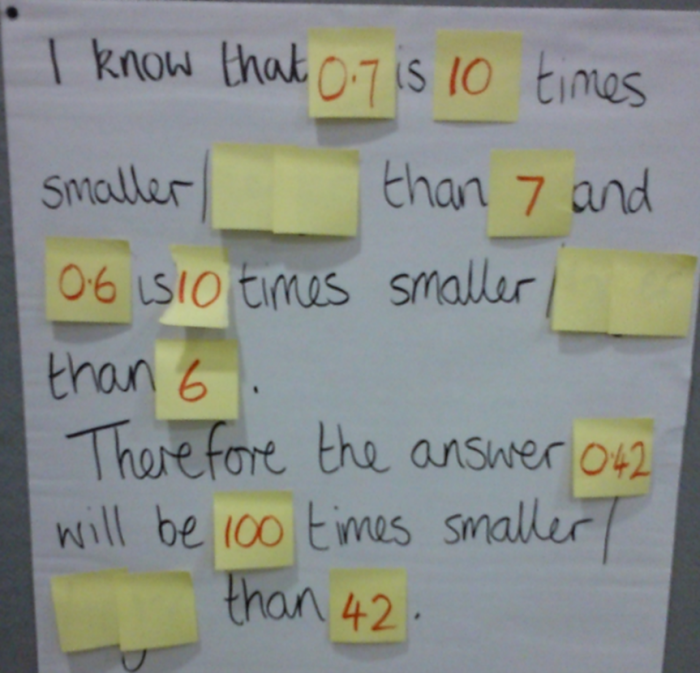
Of course, sticky notes are an excellent resource at this point to jot down the initials of pupils where further input may be needed and if you are lucky enough to have other adults in the room, you can make use of their eyes and ears to note down pupils across the classroom.
Whiteboard work and talk activities are great opportunities for assessment, but it is vital that this assessment information is reviewed carefully and that no child is missed so that learning insecurities and gaps can be closed.
Why not use sticky notes to create an interactive working wall?
Here, Year 6 pupils have added their thoughts to an ‘always, sometimes, never’ question. Using the sticky notes allows them to review and respond to peer responses and provides some quick assessment information for the teacher about security of understanding.
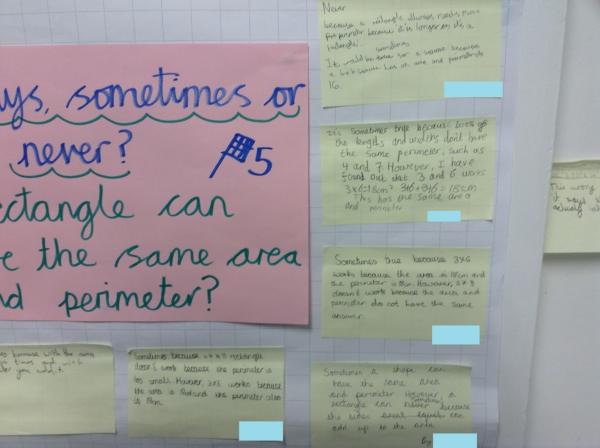
For more ideas for enhancing your working wall: 4 ways to make your maths working wall work
Of course, it is not actually the sticky note itself that makes the difference, but if you are noticing similar issues across your school, it is probably time to consider the small changes to practice that will enable:
- teachers to think deeply about the learning in their lessons,
- pupils to clearly see the connections between models to deepen their understanding,
- rigorous formative assessment so that no child is missed.
To keep up to date: Join our Primary Subject Leaders’ mailing list
To subscribe to our blogs: Get our blogs straight to your inbox
